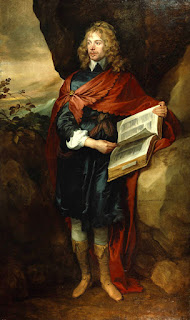I noticed an interesting possible parallel between the Sonnet to Henry Neville and a passage from All's Well that Ends Well. The Sonnet appeared in the 1603 Microcosmos by John Davies of Hereford. Here it is:
The first two lines read:
There was a Time when, ah, that so there was,
Why not there is? There is and was a Time,
Compare to this passage from All's Well that Ends Well:
This young gentlewoman had a father,—O, that 'had'! how sad a passage 'tis! (1.1.17)
There is a great deal of other research suggesting that the author of the works of Shakespeare read and was influenced by Microcosmos. See, for instance, "Shakespeare's Sonnet cxi and John Davies of Hereford's "Microcosmos" (1603)" (JSTOR).
Brian Vickers in his 2007 book Shakespeare, A Lover’s Complaint, and John Davies of Hereford, suggests that Shakespeare “knew, and referred to” the work of John Davies of Hereford. Specifically, he suggests that this famous dialog in Macbeth:
Porter: Faith Sir, we were carousing until the second Cock: and drink, Sir, is a great provoker of three things.
Macduff: What three things does drink especially provoke?
Porter: Marry, Sir, nose-painting, sleep, and urine. (2.3.24-8)
Is derived from this description in Microcosmos:
Drink hath three; offices, The first assists
Concoction, for in it is boil'd the meat:
The next, to mix the food the first digests:
The Last, to bring it to the Livers heat
Much more on this to come, but just wanted to share this possible parallel.












